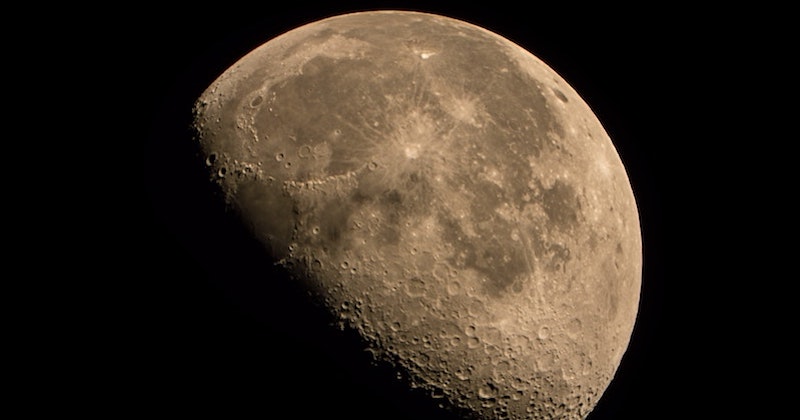In the mid-1890s, the Pall-Mall Gazette in England showcased illustrations by Fred T. Jane in a series titled “Guesses at Futurity.” These visual speculations depicted life in the year 2000. Number 7, titled “Interplanetary Communication. Gold Mining on the Moon,” portrayed a scene where a glass tunnel, partially buried and shaded, extended from the foreground past lampposts into a complex of enclosed bridges and towers. Above the rugged peaks, a half-Earth and an oblong satellite adorned with antennae floated in the sky. While the architectural style leaned more towards late Victorian than futuristic, the concept of lunar mining for gold has evolved to a focus on water extraction today.
The exploration now revolves around water, not just for economic purposes but as a scientific treasure trove. Lunar water ice holds a chemical heritage tracing back to the dawn of the solar system. This knowledge serves as a compass in our quest for extraterrestrial life. The study of ancient cometary ice enhances our understanding of the outer solar system, while analyzing other lunar materials refines our comprehension of the Moon’s origin and composition.
The far side of the Moon emerges as a promising location for radio telescopes. Shielded from Earth’s interference, this region offers an optimal setting to investigate phenomena ranging from exoplanet magnetic fields to early universe imprints. Enthusiasts envision infrared telescopes nestled in dark polar craters with the capacity to discern seasonal variations and weather patterns on distant stellar bodies.
For humanity to thrive beyond Earth, we must learn to cherish and safeguard our home planet. Habitats on alien worlds must provide protection and solace to their inhabitants. The lunar surface presents challenges such as intense radiation exposure from various cosmic sources, including high-speed particles capable of damaging DNA and causing cancerous mutations. Prolonged exposure to the Moon’s low gravity also poses health risks for long-term residents.
The issue of moondust poses a significant hurdle. Astronauts during the Apollo missions grappled with the abrasive nature of lunar dust, which infiltrated their suits and equipment, causing discomfort and potential health hazards. Developing innovative solutions like the “Electrodynamic Dust Shield,” utilizing invisible electrodes to repel dust particles, represents a crucial step in mitigating this challenge.
A potential lunar settlement at the south pole could leverage continuous sunlight for power generation but may require structures buried in regolith for shielding against radiation and micro-meteorite impacts. Initiatives like 3D printing structures using heated lunar regolith by companies such as ICON showcase innovative approaches to lunar habitat construction. While the concept of establishing a lunar “base” initially populated by robots is under consideration, the practicalities of working with lunar resources, including extracting oxygen from regolith, pose formidable obstacles yet to be overcome.
Exploring the idea of inhabiting lunar lava tubes, which offer natural protection from micrometeorites, radiation, temperature fluctuations, and surface dust, presents a compelling alternative. Identifying viable lava tube sites, including those near the lunar south pole with potential water ice deposits, raises exciting possibilities for future lunar habitats. Despite the challenges, the prospect of cultivating gardens within lunar tunnels ignites the imagination, envisioning a harmonious blend of nature and technology in the lunar landscape.
As humans venture further into space, the constraints of living in confined spaces underscore the importance of mental well-being. Practices like mindfulness, embraced by some astronauts, offer a pathway to enhance psychological resilience and combat stress-induced issues that may arise during extended space missions. Integrating mindfulness training into astronaut preparation could play a pivotal role in promoting emotional well-being and performance in space environments.
In the pursuit of sustainable living beyond Earth, the cultivation of plant life in space habitats not only serves practical purposes like food production and oxygen generation but also nurtures psychological well-being by reconnecting astronauts with familiar elements from their home planet. Research efforts to grow plants in simulated lunar regolith signify a crucial step towards establishing self-sustaining ecosystems in extraterrestrial environments.
The vision of establishing self-sustaining lunar settlements prompts considerations about resource management, ethical governance, and community dynamics. Addressing potential challenges related to resource distribution, privacy, and population control will be essential for fostering a thriving lunar community. By proactively engaging in discussions about these complex issues, we can aspire to offer lunar settlers a fulfilling and sustainable quality of life.
As humanity embarks on the journey towards establishing permanent lunar habitats and potentially evolving into a multi-planetary species, the emphasis on problem-solving without creating new challenges emerges as a critical objective. The legacy of lunar exploration may not solely rest on technological advancements but on our ability to navigate the ethical and practical complexities of sustaining human life beyond Earth.
